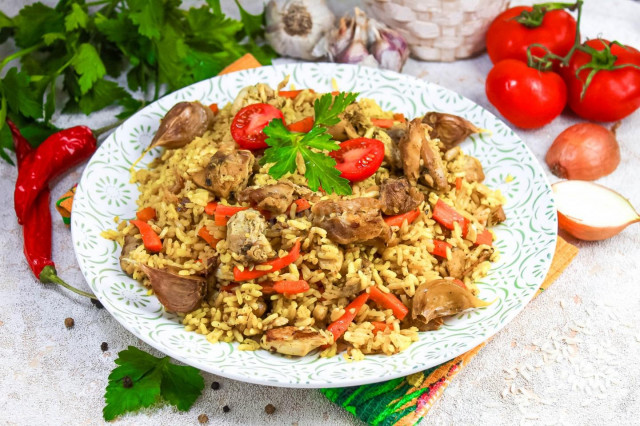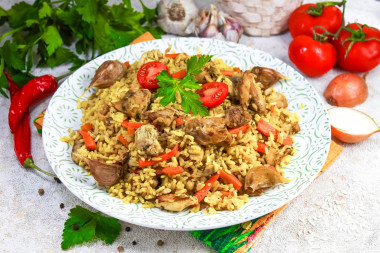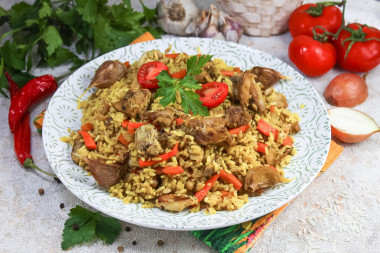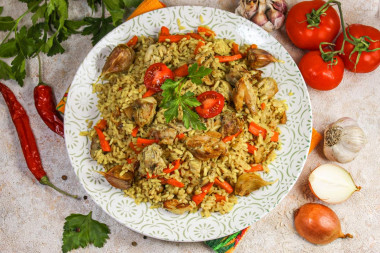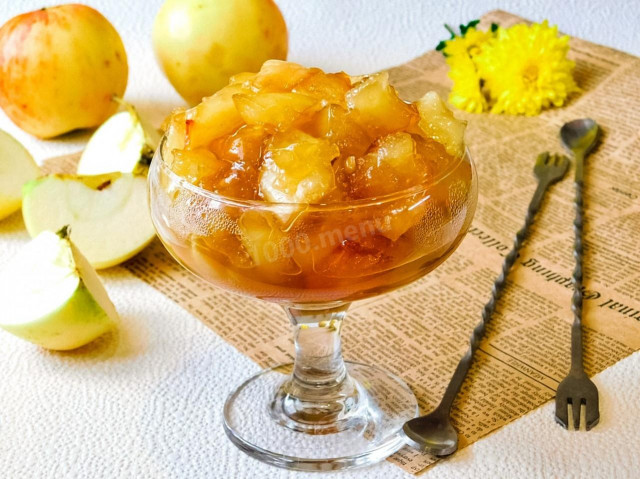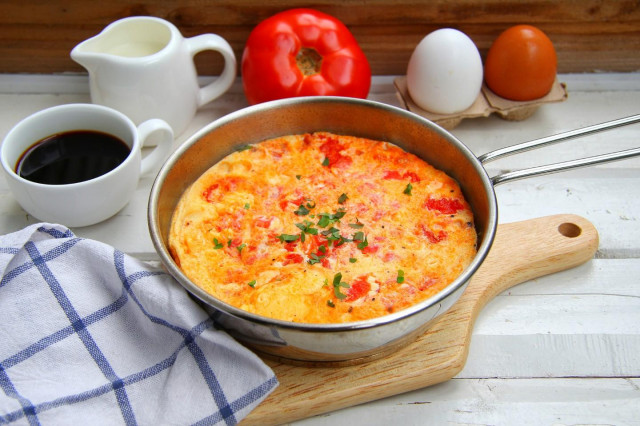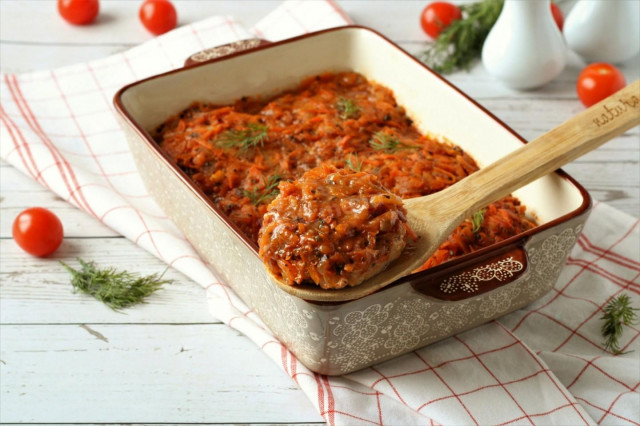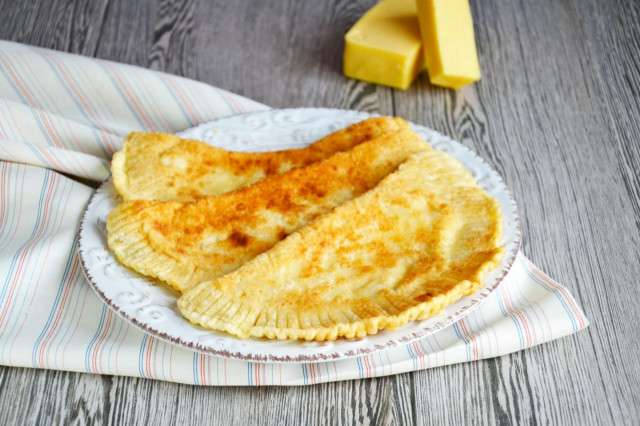Composition / ingredients
Step-by-step cooking
Step 1:

How to make crumbly pilaf with chicken in a saucepan? Prepare all ingredients. In order for the pilaf to turn out crumbly, you need to start by choosing the right rice. Sometimes manufacturers indicate on the packaging "for pilaf". If this is not found, take any long-grain. There is less starch in it and it will stick together less. Chicken meat can be taken from any part of the bird. From spices, take cumin, barberry, saffron, turmeric, red and black pepper, thyme.
Step 2:
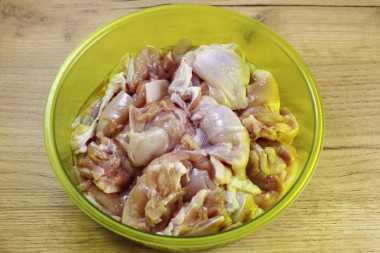
Rinse the chicken under running water. If it is not cut, cut the flesh from the bones, remove the skin. They can be used in another dish, for example, to cook broth. Cut into pieces no larger than 2x2 cm. Wipe the resulting pieces with paper towels so that there is no moisture left and there are fewer splashes when frying.
Step 3:
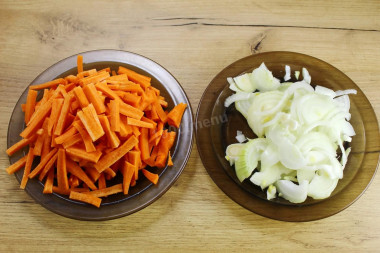
Peel the onion, rinse and cut into half rings. Peel the carrots, rinse and cut into strips. Such cutting is considered traditional for pilaf.
Step 4:
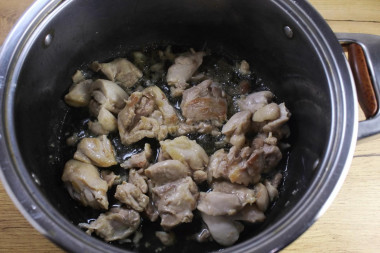
Preheat a saucepan with a thick bottom over medium heat and pour vegetable oil on it. Take a saucepan of such a size that all the ingredients for pilaf fit in it. Transfer the chopped chicken and fry over high heat until light golden brown.
Step 5:
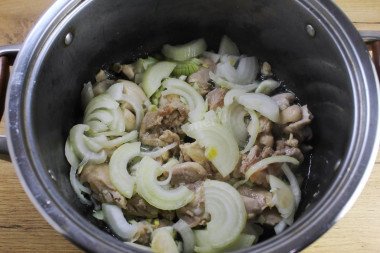
Flip the chicken to the other side and add the chopped onion to the pan. Stir and fry for 2-3 minutes.
Step 6:

Then put the carrots in a saucepan, stir. Fry for another 3-4 minutes, until the carrots become softer.
Step 7:

Add salt and spices. Stir and turn down the heat. Boil the water, you will need it hot. Remember that from this moment until the pilaf is served, you can not mix it in any case - it will turn into porridge.
Step 8:

Rinse the rice several times in cold water until it becomes transparent. This way the starchy substances will be washed better and the pilaf will be more crumbly. Transfer the rice over the meat and vegetables. Peel the garlic from the upper shell, leave the cloves unpeeled, put them on the rice and drown a little.
Step 9:
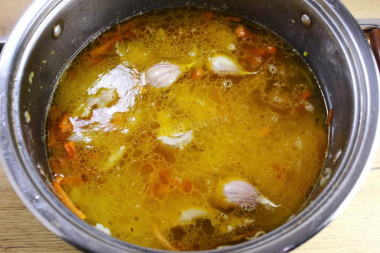
Fill everything with hot water so that it is 1.5-2 cm higher than rice. Cover and simmer over medium heat for about 15-20 minutes, until the rice has absorbed all the water.
Step 10:
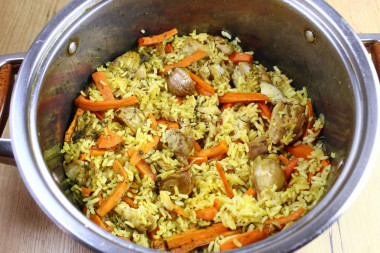
To make the excess liquid evaporate faster, make depressions in several places with a spatula to the level of the bottom of the pan. If there is still liquid in them, then the water has not completely boiled off yet, and if there is no liquid, feel free to remove the pan from the heat. Cover with a lid and leave to infuse for 10-15 minutes.
Before serving, be sure to mix the pilaf, and then put it on a large dish with a slide or each portion. A delicious sauce or salad of fresh vegetables can be served with pilaf.
Chicken can be replaced with turkey or any other type of meat at your request. But keep in mind that in this case, the cooking time and calorie content of the dish will change.
Keep in mind that the final result in this dish also depends on how you chop the carrots: grated carrots will turn into mush during heat treatment and mix evenly with the rest of the ingredients, cut into strips or cubes will retain their shape.
Use oil with a high smoking temperature for frying! Any oils are useful only until a certain temperature is reached - the point of smoking, at which the oil begins to burn and toxic substances, including carcinogens, are formed in it.
Unrefined oils, with rare exceptions, have a low smoking point. There are a lot of unfiltered organic particles in them, which quickly begin to burn.
Refined oils are more resistant to heating, and their smoking point is higher. If you are going to cook food in the oven, on a frying pan or grill, make sure that you use oil with a high smoking point. The most common of the oils with a high smoking point: refined varieties of sunflower, olive and grape.
Caloric content of the products possible in the composition of the dish
- Category I chicken - 238 kcal/100g
- Chicken of the II category - 159 kcal/100g
- Chicken, flesh without skin - 241 kcal/100g
- Chickens - 140 kcal/100g
- Raw wild rice - 353 kcal/100g
- Brown raw rice - 360 kcal/100g
- Boiled brown rice - 119 kcal/100g
- White fortified raw rice - 363 kcal/100g
- Fortified boiled white rice - 109 kcal/100g
- White rice, steamed, with long grains raw - 369 kcal/100g
- Steamed white rice, boiled with long grains - 106 kcal/100g
- Instant dry rice - 374 kcal/100g
- Instant rice, ready to eat - 109 kcal/100g
- Fig - 344 kcal/100g
- Carrots - 33 kcal/100g
- Dried carrots - 275 kcal/100g
- Boiled carrots - 25 kcal/100g
- Garlic - 143 kcal/100g
- Vegetable oil - 873 kcal/100g
- Salt - 0 kcal/100g
- Water - 0 kcal/100g
- Onion - 41 kcal/100g
- Spices dry - 240 kcal/100g

